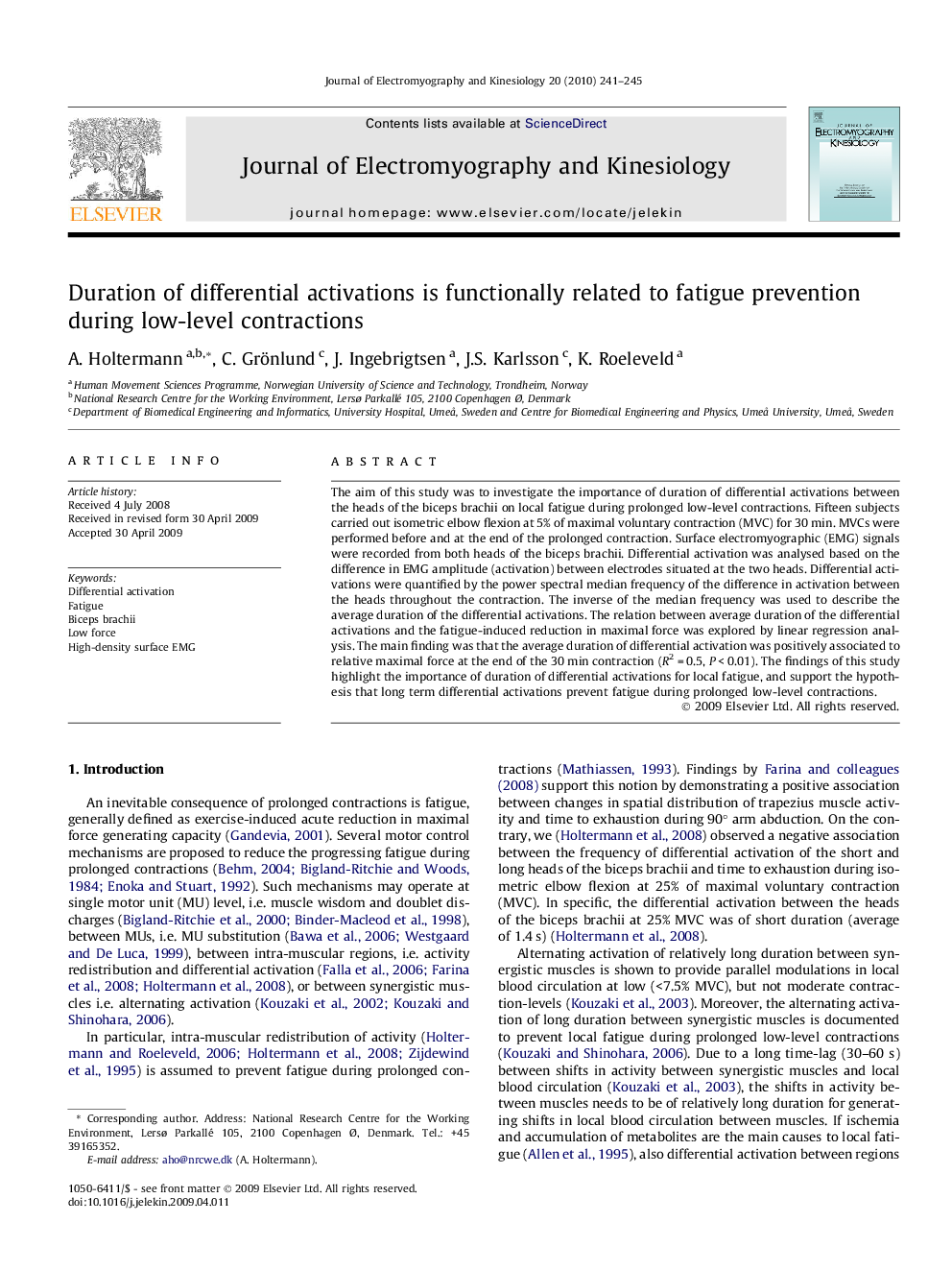| Article ID | Journal | Published Year | Pages | File Type |
|---|---|---|---|---|
| 4065284 | Journal of Electromyography and Kinesiology | 2010 | 5 Pages |
The aim of this study was to investigate the importance of duration of differential activations between the heads of the biceps brachii on local fatigue during prolonged low-level contractions. Fifteen subjects carried out isometric elbow flexion at 5% of maximal voluntary contraction (MVC) for 30 min. MVCs were performed before and at the end of the prolonged contraction. Surface electromyographic (EMG) signals were recorded from both heads of the biceps brachii. Differential activation was analysed based on the difference in EMG amplitude (activation) between electrodes situated at the two heads. Differential activations were quantified by the power spectral median frequency of the difference in activation between the heads throughout the contraction. The inverse of the median frequency was used to describe the average duration of the differential activations. The relation between average duration of the differential activations and the fatigue-induced reduction in maximal force was explored by linear regression analysis. The main finding was that the average duration of differential activation was positively associated to relative maximal force at the end of the 30 min contraction (R2 = 0.5, P < 0.01). The findings of this study highlight the importance of duration of differential activations for local fatigue, and support the hypothesis that long term differential activations prevent fatigue during prolonged low-level contractions.
